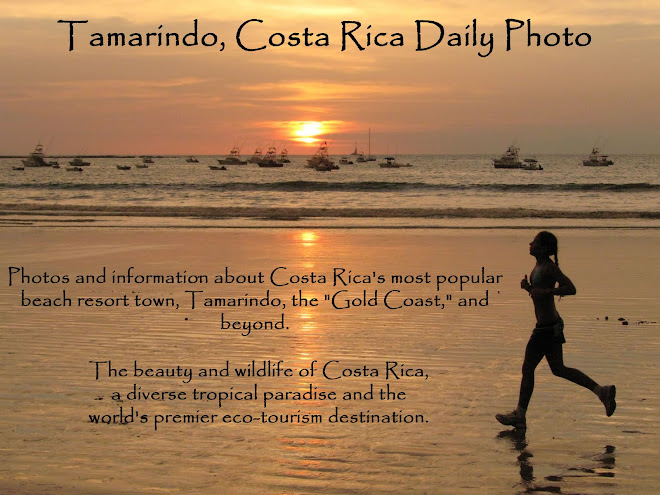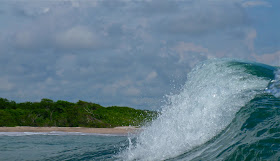
Here is the opposite view of the photo that I showed yesterday. You will see the same dead tree trunk that was in the photo I posted the last two days, including from December 2005.
My wife refers to the tree trunk as our "Georgia O'Keefe tree." The texture of the tree trunk, and colors of the sky and sea behind it, evoke the type of imagery that Julie imagines Georgia O'Keefe would have painted if she were sitting on the balcony of our condo, sharing this view with us.
There are several problems with Julie's theory, of course. (1) Georgia O'Keefe died 20 years before our condo was built. (2) O'Keefe found her artistic and spiritual home in the high desert of New Mexico. The tropical environment of Costa Rica just does not seem like O'Keefe country to me.
I do not have as much interest in the O'Keefe tree. I would rather speculate about the photos that her husband, Alfred Steiglitz, would have taken if he had visited Costa Rica with her.
OK, I know what you are thinking. (1) How many glasses of wine to accompany the sunset did Dave and Julie have when they had this conversation; and (2) did they get baked in the sun too much during the day? Well, one of the benefits of having a place on the beach is to be able to contemplate questions that would not come to mind in a day at the office, or driving in traffic, or watching the news back in the USA.
This week on our travel photo site,
Viva la Voyage, we happen to be showing photos from Costa Rica, which of course is what I show in this site every day. Some of our favorite Costa Rica photos are featured this week.
 This is a more traditional view of a crocodile. Compared to this crocodile, yesterday's crocodile looks like a dolphin at Sea World doing tricks.
This is a more traditional view of a crocodile. Compared to this crocodile, yesterday's crocodile looks like a dolphin at Sea World doing tricks. 





























